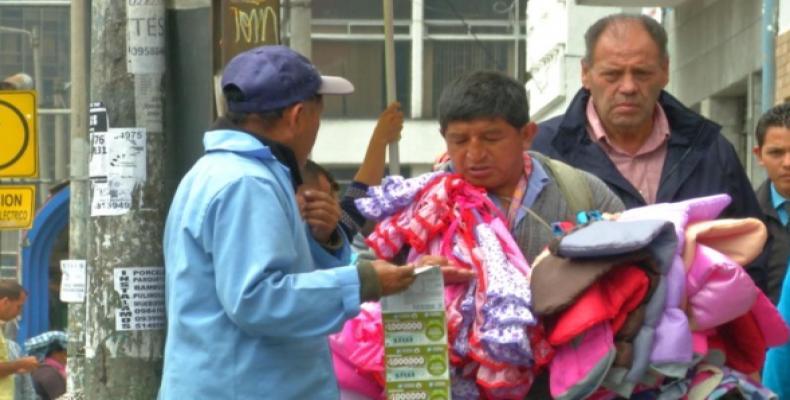Quito, October 17 (RHC)-- Unemployment in Ecuador reached 4.9 percent in September, growing 0.9 percent since September 2018, the National Institute of Statistics and Census (INEC) reported Wednesday.
According to the latest National Survey on Employment, Unemployment, and Under-employment, the number of unemployed in the last year grew by 74,053 people, by September 406,871 Ecuadoreans had no job.
Adequate employment, which contemplates social benefits and a salary higher than the minimum was 38.5 percent; while underemployment registered represented 19.7 percent of the population.
Right-wing President Lenin Moreno’s neoliberal handling of the economy and the International Monetary Fund’s austerity measures are the main culprits behind this increase in unemployment.
On September 1, 2017, Moreno signed executive order 135, which stated the overall strategy to take in order to "optimize and reduce public spending." Based on that the Coordinating Company of Public Companies (EMCO) announced on February 2019 that public companies were to cut 10% of their payroll. According to EMCO, the companies under its coordination report 39,100 workers, which would mean almost firing 4,000 employees.
While another determinant is the signing of a $4.2 billion deal with the IMF. Ecuador’s government presented a Letter of Intent to the institution on March 1 which was made public on March 21. This official document details all the actions and conditions a national government is willing to accept and apply in order to obtain the IMF loan, including major labor reforms and layoffs in the public sector.
As Minister of Finance and Economy Richard Martinez said an “urgent” labor reform will take place. Flexibility and deregulation will benefit employers at the cost of employees’ rights or, as the IMF has sugar-coated it, “reducing labor market rigidities and improving competitiveness.” The rationale behind this is that by allowing for less-rigid labor contracts there will be an “increase in female labor force participation and youth employment opportunities.”
In April, the country’s Minister of Labor informed that just from December 2018 to February 2019, 11,820 people have been fired from the public sector.
The structural reforms in the deal will create a recession in the country. As the IMF itself projects it with a contraction of real GDP of 0.5 percent, as well as a projected rise in unemployment for each of the first three years of the program. While the Ecuadorean government projected an increase in the unemployment rate from 3.7 percent in 2018 to 4.7 in 2020.
“Even these forecasts appear to be quite over-optimistic for a number of reasons,” Mark Weisbrot and Andres Arauz argue in a report of the IMF program for Ecuador for the Center for Economic and Policy Research.
Wednesday’s figures would surpass the “worst” forecasted year by the IMF which was meant to be 2021 with a 4.8 percent unemployment rate. Thus the projections are grimmer and will likely result in a higher percentage of poverty throughout the country, especially the rural areas.


